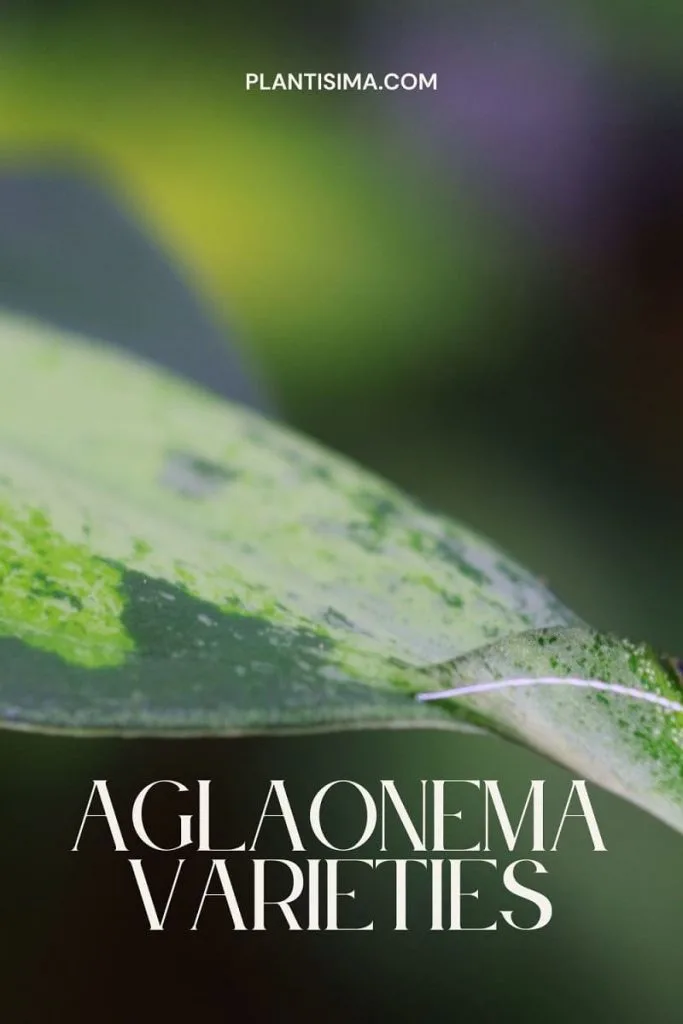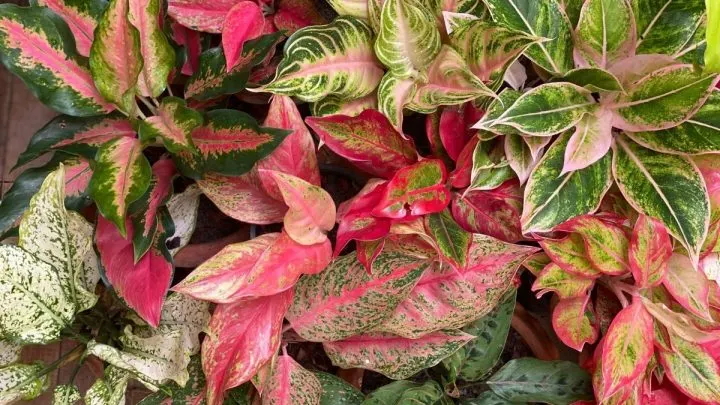No wonder why is it called “Aglaonema.” Borrowed from the Greek language, the word aglaonema (originally aglaós) means beautiful, splendid, and bright. When you see Aglaonema varieties you’re one hundred percent sure that its name is deserved.
Its colorful foliage, hot pink tones that some varieties have, and its classy appearance are just some of the reasons why so many houseplant collectors decide on this plant.
If you’re tired of plain green leaves, this plant has to offer other colors and other variations from its ranks. If you’re ready to adopt this wonderful plant, this guide will help you decide which one to get and how to take care of it.
You can thank us later, now it’s time to learn more about aglaonema varieties. Aglaonemas can bloom indoors if the conditions are right.
The flowers consist of a colored spatula – a type of modified leaf – and a spadix – a type of flowering plant in the spikelet. The flowers are usually pale white or light green.
How Many Types Of Aglaonema Varieties Are There?
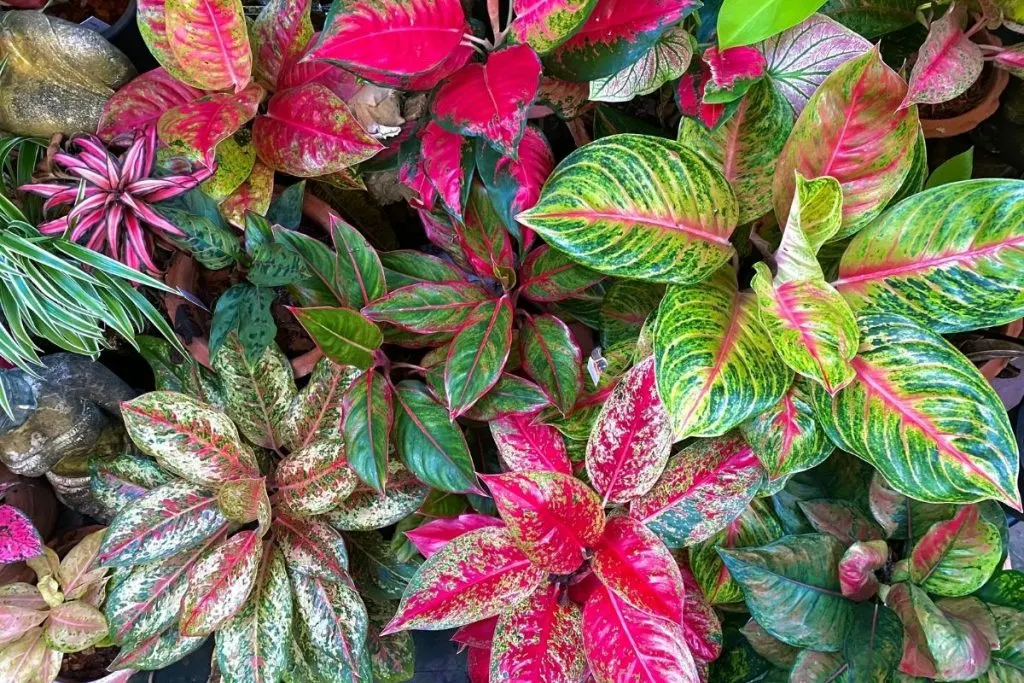
Even though the aglaonema variety looks much alike, there is some obvious and less obvious difference between them.
Dark green edges, bright pink stems, green leaves or pink leaves, and pink or green leaves are just some of those differences.
Aglaonema has 24 different varieties. This number won’t always be the same when you check this information. It all depends on what botanic register you’re looking at and where you’re searching for this information.
But How Can I Tell Which Aglaonema I Have?
As it’s written above, aglaonema varieties are different based on their looks. Some aglaonema have pink leaves, some have green or dark green leaves. Another aglaonema has pink veins and pink bright pink stems or green stems.
In our guide you’ll learn more about their looks and based on that, you’ll be able to identify your aglaonema and tell for sure, which one you have.
Which Aglaonema Is The Best For My Home?
The best choice for your home would be the Chinese evergreen variety or a Silver queen. But wait for a second: aglaonema’s native habitat is Asia and New Guinea.
When you think about temperatures and climate there, you can already tell is much different from your house conditions.
But like every other plant, if you provide good conditions for it, it will grow perfectly just as it would grow in its native habitat.
Does Aglaonema Plant Need Sunlight?
To provide it sunlight or not provide it, the question is now. Direct sunlight isn’t a good choice for your aglaonema plant.
What this plant loves and prefers is indirect light. When you provide it with indirect bright indirect sunlight I can tell you, it will just keep growing.
Save Your Oohs And Ahhs For Aglaonema Silver Queen
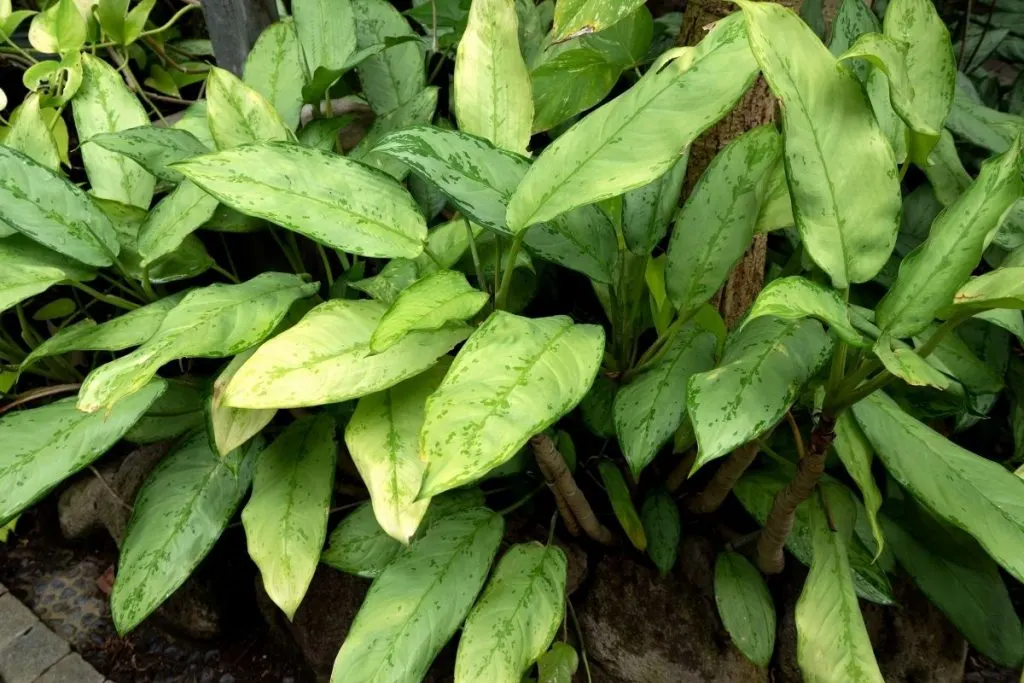
Native habitat: Asia
Scientific name: Aglaonema silver queen
Light: low light conditions/bright light
Temperature: 68 to 77 °F
Height: 2 to 3 feet tall
Humidity: high humidity
Soil: well-draining, slightly acidic soil
Chinese evergreen is also called Silver Queen because of its elegant look. It also goes under the name aglaonema sparkling Sarah. Chinese evergreen varieties are also Silver King and Silver Bay. Maybe you’re used to your average Chinese evergreen plant, but this one will ask for a bit more attention.
This plant has bright green leaves with a grey-green center. All types of aglaonema have almond-shaped leaves with pointed edges. It happens that in one period of its growth (flowering) it gets pink edges, ie pink veins.
This plant requires indirect light. Therefore, place it next to the West Window, and in this way, you will provide bright indirect light for the Chinese aglaonema.
Given the temperature it requires, it would be best to store it in a hallway or a room that does not have a variable temperature.
Chinese evergreen plants require high humidity, and in that case, even a bathroom would be a good option.
When buying a plant, consult with your florist about choosing the right soil for your Chinese evergreen. Your florist will probably have the right type of soil for Chinese evergreens.
Silver King: Does It Deserve Its Throne?
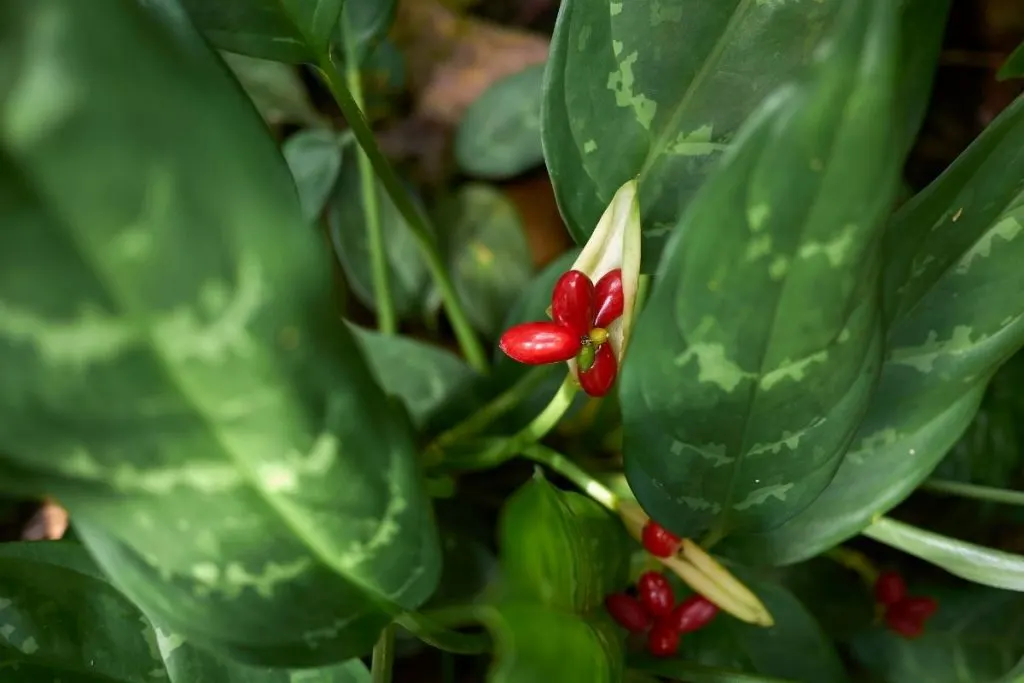
Native habitat: subtropical regions of Asia
Scientific name: Aglaonema nitidum
Light: low light conditions/bright light
Temperature: 68 to 77 °F
Height: 3 feet tall
Humidity: high humidity
Soil: well-draining soil
Unlike his queen, the king doesn’t have such an obvious silvery shade on his leaves. But since they look so much alike, they named this plant king.
This plant has light green foliage with a pale silver green in its interior. It has pale green stems and no signs of dark green shades.
Since this plant likes bright light, treat it like a Silver queen and you won’t have any issues. When it comes to its soil, silver king just l o v e s pumice or perlite in its soil. Avoid heavy mix soils for silver king and other aglaonema varieties in general.
Aglaonema Silver Bay: More Jewellery For Your Home
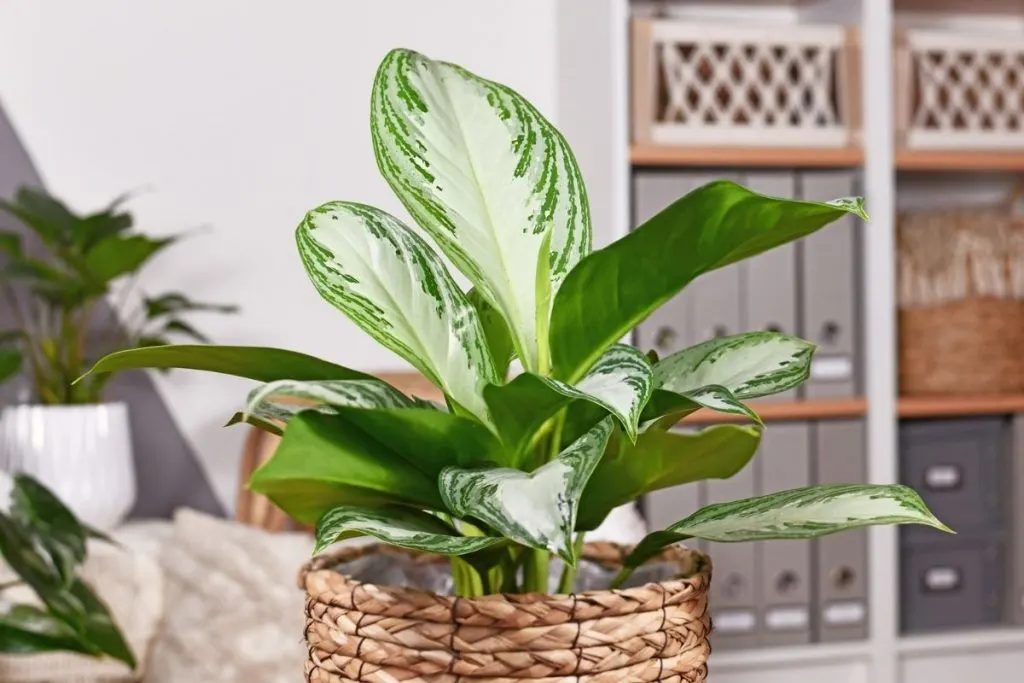
Native habitat: tropical regions across Asia
Scientific name: Aglaonema Commutatum
Light: bright light
Temperature: between 80 and 90 °F
Height: 40 to 50 inches
Humidity: high humidity
Soil: well-draining soil, moisture-retentive
It may not be as dazzling as other varieties of Aglaonema, what it lacks in color makes up for in other ways.
Aglaonema ‘Silver Bay’ is described as a good beginner plant, and with good reason. This plant can survive in many conditions and still behave well.
Originating from the humid, shady forests of Asia, the natural habitat of this plant is what makes it so good for our homes.
While it may be easier to keep this houseplant than some other ones, you still need to know many things before you bring one of the silver bay plants home.
About Red Peacock Aglaonema
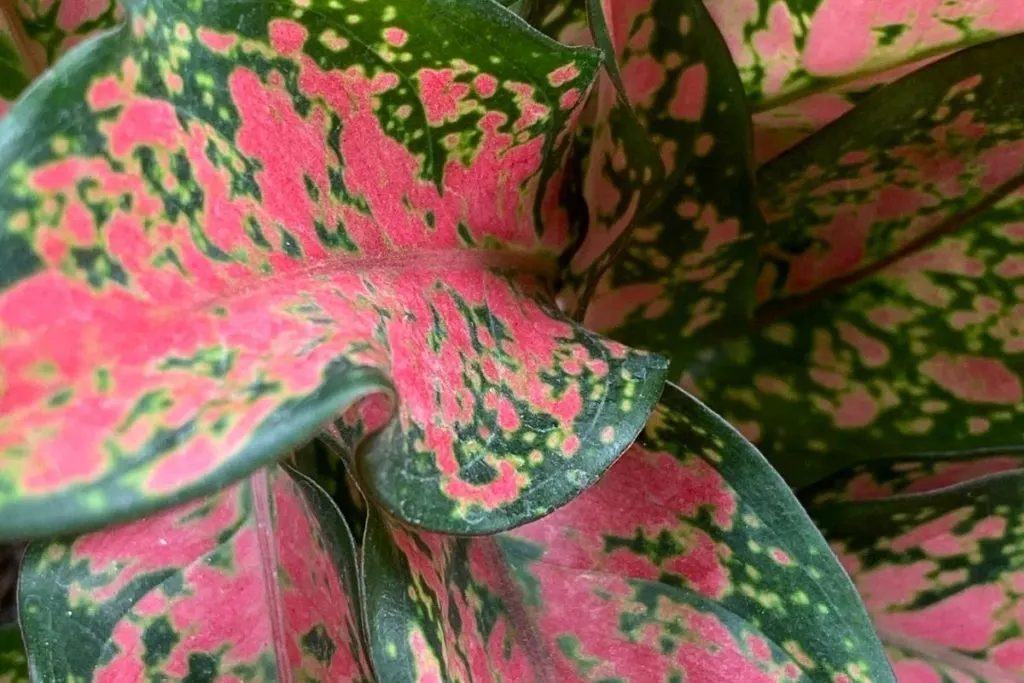
Native habitat: rainforests of Asia
Scientific name: Aglaonema rubrum
Light: bright indirect natural light or bright artificial light
Temperature: between 80 and 90°F
Height: 40 to 50 inches
Humidity: humid surroundings
Soil: slightly moist
Red Aglaonema is a deciduous tropical houseplant with large green, red, and sometimes pink leaves.
Also called the Chinese evergreen plant, the red plants of Aglaonema include varieties of the flowering genus Aglaonema.
Varieties of Aglaonema with pink and red leaves include ‘Siam Aglaonema’, ‘Pink Dalmatian’, ‘Ultra Pink’, ‘Red Emerald’, and ‘Super Red Star’. Other red leaves plants can you also find in our articles.
As aglaonema Maria they can also grow under artificial light/fluorescent light. Don’t overdo watering with this aglaonema variety because that might kill it.
This variety doesn’t like dry air, so make sure to get an air freshener or to place it somewhere where humidity is high.
What To Know About Emerald Bay Aglaonema
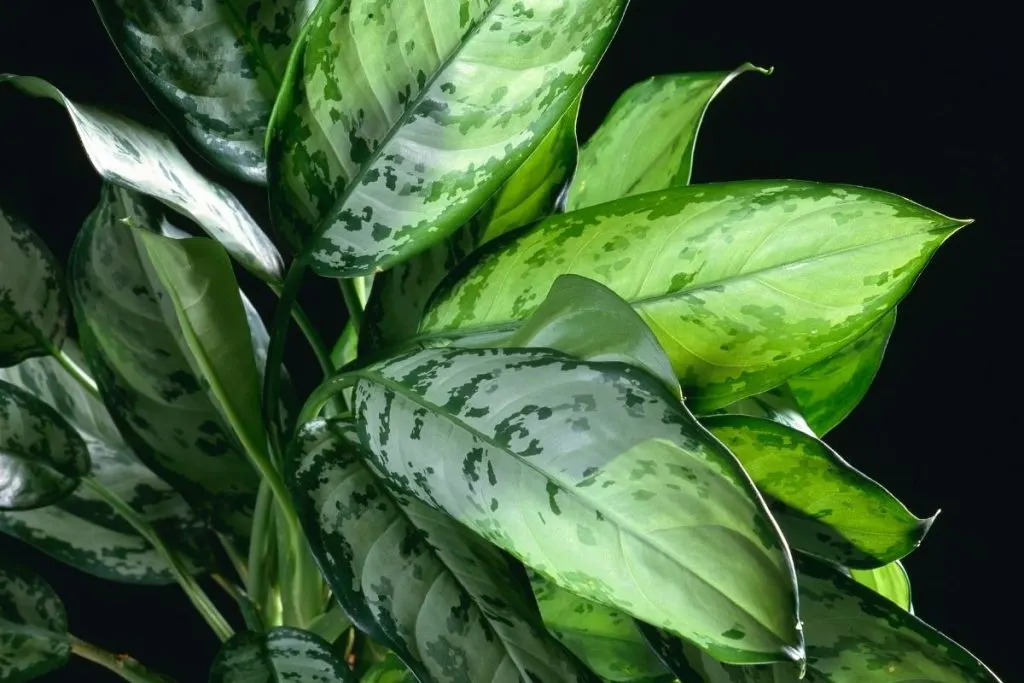
Native habitat: Asia
Scientific name: Philippina Ex libris
Light: Any location except the full sun
Temperature: between 65–75 °F
Height: 28 inches
Humidity: low humidity levels
Soil: potting mix
This lovely plant has the most beautiful shiny deep green leaves. At first, when it’s starting to grow its interior is light green and later on, it turns into a darker shade of green. Because of its height, it has short stems as well.
Emerald bay aglaonema likes low humidity so be careful on that one. Dry air won’t suit it but a low humidity (living room) will do just fine.
Aglaonema Pink Moon Dos And Don’ts

Native habitat: New Guinea
Scientific name: Aglaonema ‘Siti Nurhaliza
Light: bright indirect sun
Temperature: 60 and 70 °F
Height: 2-3 feet tall
Humidity: high humidity
Soil: well-draining soil
Pink Moon Aglaonema is one of many pink aglaonema varieties. Its exotic look (pink color) is exactly what tracks so many people to get one.
It’s one of the aglaonema varieties that have dense foliage. If you want to enrich your plant collection plant moon and its colorful foliage is the right choice.
Its leaves have delicate green veins combined with exotic pink lines and dark green spots and their interior. It is not a good camouflage plant but do you want one anyway?
You buy a pink moon aglaonema when you want to have an outstanding house plant collection. Pink Moon if treated right will produce pinkish-white flowers.
You will notice them in the spring and summer. It is one of the most beautiful floor plants you can get for your home.
Light Pink Aglaonema Variarety
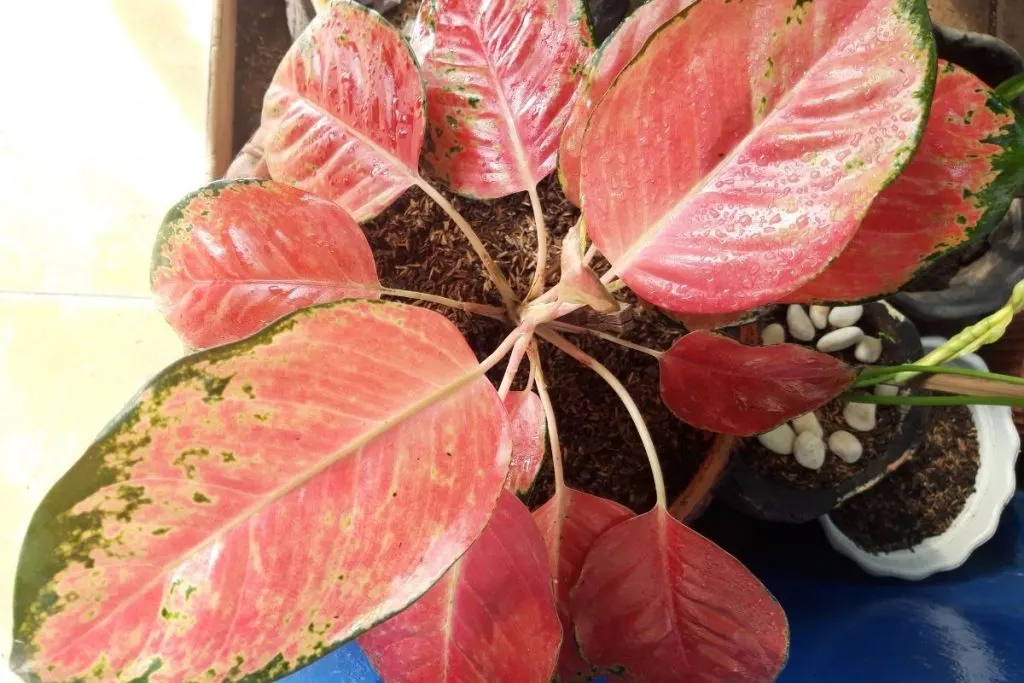
Native habitat: humid, shady tropical forest habitat of Asia
Scientific name: Donna Carmen
Light: indirect bright light
Temperature: 65–75 °F
Height: 25 inches
Humidity: high humidity
Soil: potting mix
This plant will make you fall in love at first sight. It will take your breath away and you’ll want it badly in your home. Its pink foliage and outstanding appearance will steal your heart.
Unlike other aglaonema varieties, it is more sensitive so you will have to be more careful with it.
Make sure it has an indirect bright light, don’t get silly ideas like placing it on the direct sun, it will not survive. It has a bright pigment and because of that, it can only stand shady light.
Siam Aurora: What’s Behind Stunning Pink Veins
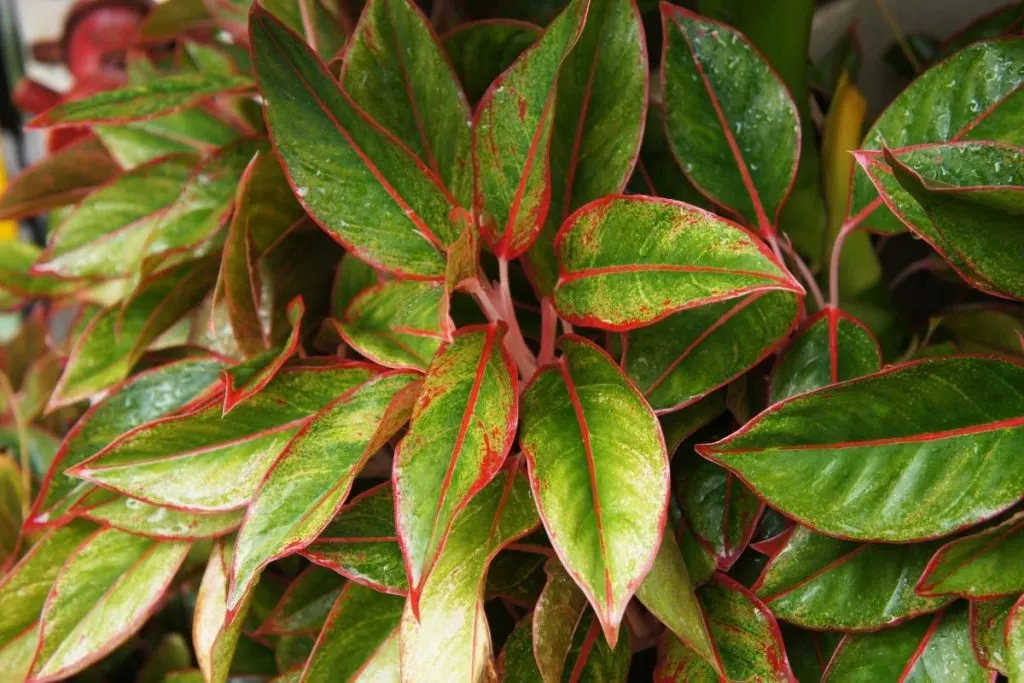
Native habitat: Asia
Scientific name: Siam Aurora
Light: bright light
Temperature: 65 to 76 °F
Height: 3 feet tall
Humidity: extra humidity
Soil: loose soil
Your lovely Siam Aurora is finally at your home and you want to provide the best conditions for it. Well, let’s see. Since Aurora likes extra humidity, use a pebble tray to raise the humidity.
The Siam Aurora variety adds color and tropical accents to any interior. Many shades of red and sometimes dark pink can change the entire look of a room. Moreover, the red plant Siam Aglaonema is also easy to care for indoors.
Other reddish aglaonema varieties include ‘Super Red Star,’ ‘Red Anjamani’,’ ‘Red Emerald,’ ‘Georgi’s Ruby,’ and ‘Red Gold.’
It is best to take care of the red Aglaonema ‘Siam Aurora’ by keeping it in a medium, indirect light.
Getting enough light helps keep the red and pink colors on Chinese evergreen leaves vibrant. Although these plants survive in low light, you may notice that their leaves lose their vitality.
Aglaonema Green Papaya And Its Juicy Look
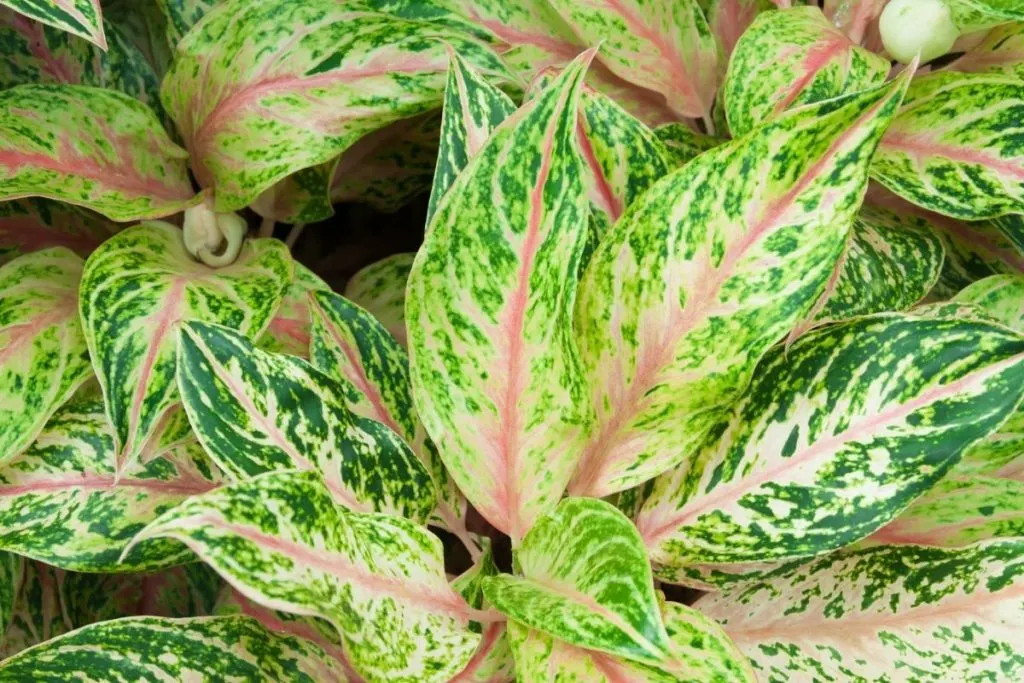
Native habitat: Asia
Scientific name: aglaonema viridis papaya
Light: bright light
Temperature: 65–75 °F
Height: 7 to 9 inches
Humidity: high humidity
Soil: Potting Soil + cocopeat + Organic manure + charcoal chips + perlite
If you’re wondering how to add everything in perfect ratio when it comes to soil, do it like this: potting mix, 50%, cocopeat 15%, organic manure 15%, ch. chips 10% and perlite 10%.
With this soil recipe, your green papaya plant will grow healthy and with no problems. Since green papaya likes high humidity bathroom or pebble tray to increase humidity will do fine.
Aglaonema Red Valentine: Fall In Love Again
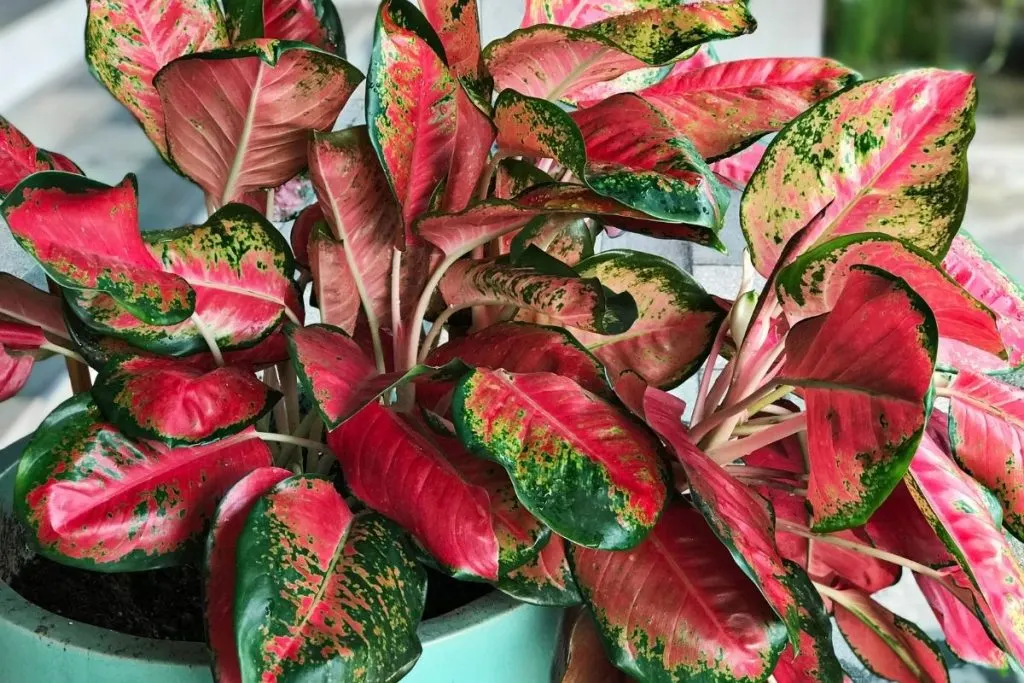
Native habitat: Asia
Scientific name: Aglaonema commutatum
Light: indirect light
Temperature: 65–75 °F
Height: 15 to 30 inches
Humidity: high humidity
Soil: mix of peat moss, perlite, and vermiculite
The red variety Aglaonema ‘Lady Valentine’ has oval to lanceolate red, pink and green leaves.
Fascinating Chinese evergreen leaves are mostly red and pink. Dark green markings appear along the blade’s edges and on the veins.
The same Aglaonema on some plants may have pink and green leaves or bright red and lime green leaves.
Like many species of Aglaonema, the pink and red coloration of the leaves can depend on sunlight.
Grow the plant in a relatively sunny place to get pink and red shades. In rooms with low lighting, the leaves become darker.
Super Pink Aglaonema
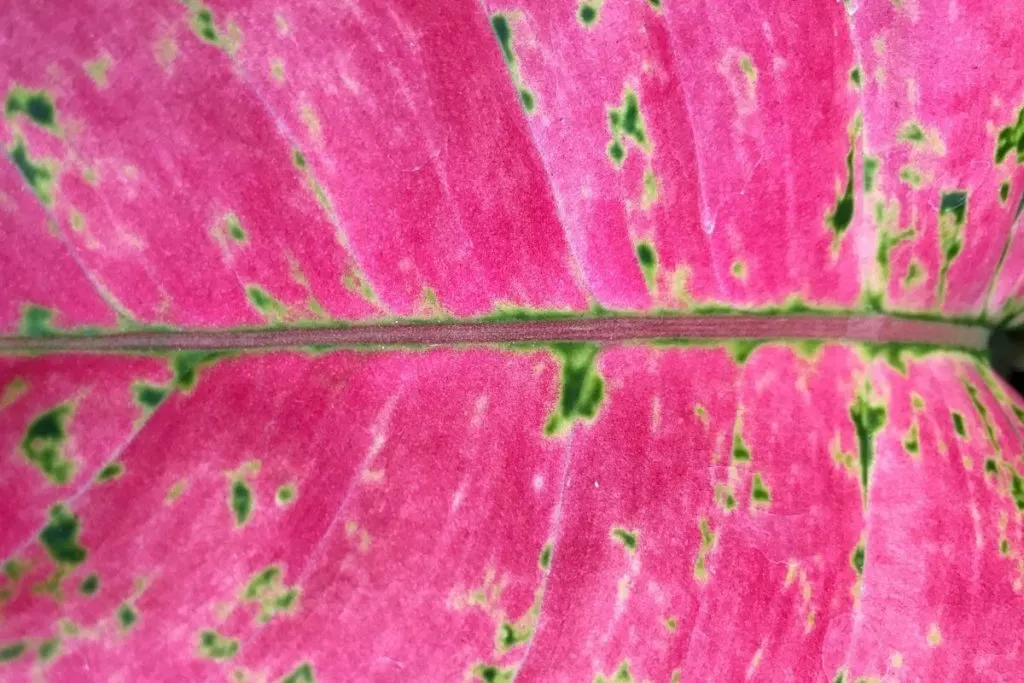
Native habitat: Asia
Scientific name: Aglaonema Rosea
Light: Indirect light
Temperature: 65 °F
Height: 40 inches
Humidity: medium humidity
Soil: well-draining
Tropical Aglaonema ‘Super Pink’ is another example of a stunningly colorful houseplant. The leaves of ‘Super Pink’ Aglaonema are almost completely pink.
Spiky pink spear-shaped leaves may have dark green dots or spots. However, some varieties have pure pink leaves.
The compact growth of this rare pink houseplant makes it ideal for adding visual interest in addition to modern apartment decoration. The pink potted plant Aglaonema looks stunning on a table, desk, or bright window sill.
Aglaonema Diamond Bay-Classy Variegated Plant

Native habitat: Asia
Scientific name: Aglaonema sinus Adams
Light: indirect light
Temperature: 65-75 °F
Height: 40 to 50 inches
Humidity: high humidity
Soil: moist
Even though it sounds very classy this aglaonema plant doesn’t seek much attention. Provide the conditions that Diamond Bay needs and it will be a good choice for your house plant.
They are such grateful plants. Place it on the west window, water it often, get a pebble to try, and voila!
Aglaonema Red Anjamani
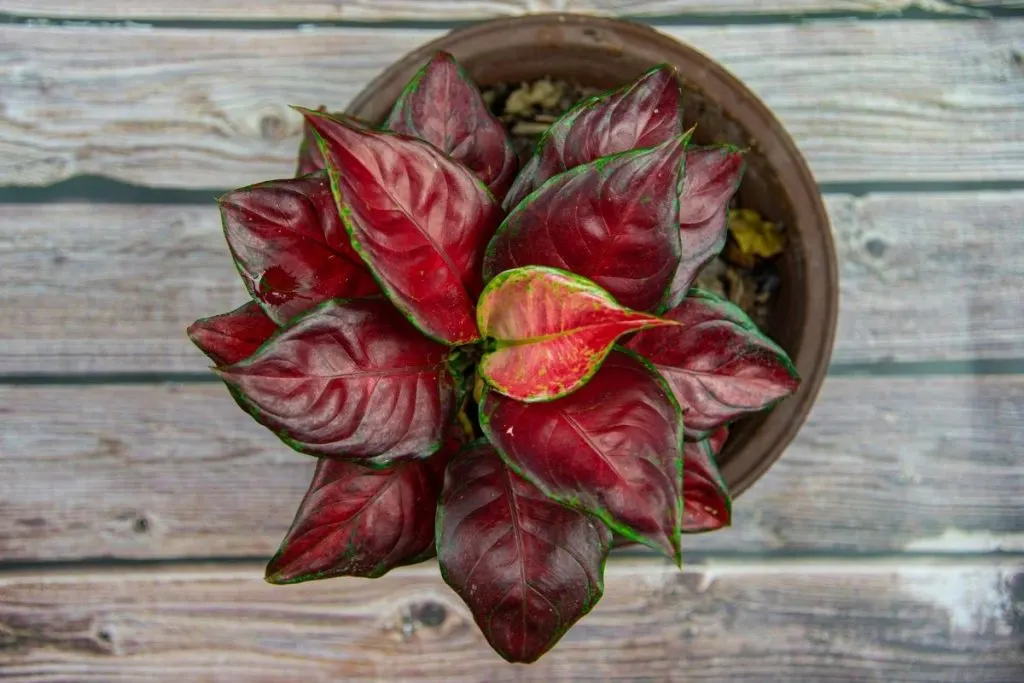
Native habitat: Asia
Scientific name: Red anjamani
Light: indirect light
Temperature: 65 °F
Height: 60 inches
Humidity: high humidity
Soil: moist and potting soil
Due to high moisture requirements, some growers consider red anjamani aglaonema a greenhouse plant.
They will thrive in a warm, humid, and bright greenhouse environment, but they can be successfully grown indoors when they get suitable conditions.
Rule number one to remember with red anjamani aglaonema is this: keep them warm and moist. You’ll be rewarded with a long-lasting houseplant that won’t outgrow your pot anytime soon.
The aglaonema ‘Red Anjamani’ has spectacular deep red heart-shaped or spear-shaped leaves with thin green edges.
Looking at the pictures of this red Aglaonema, you will notice faint green veins on the leaf. Bright red leaves and spotted dark green markings make this compact houseplant a popular choice.
Aglaonema Maria-Facts About This Lovely Lady
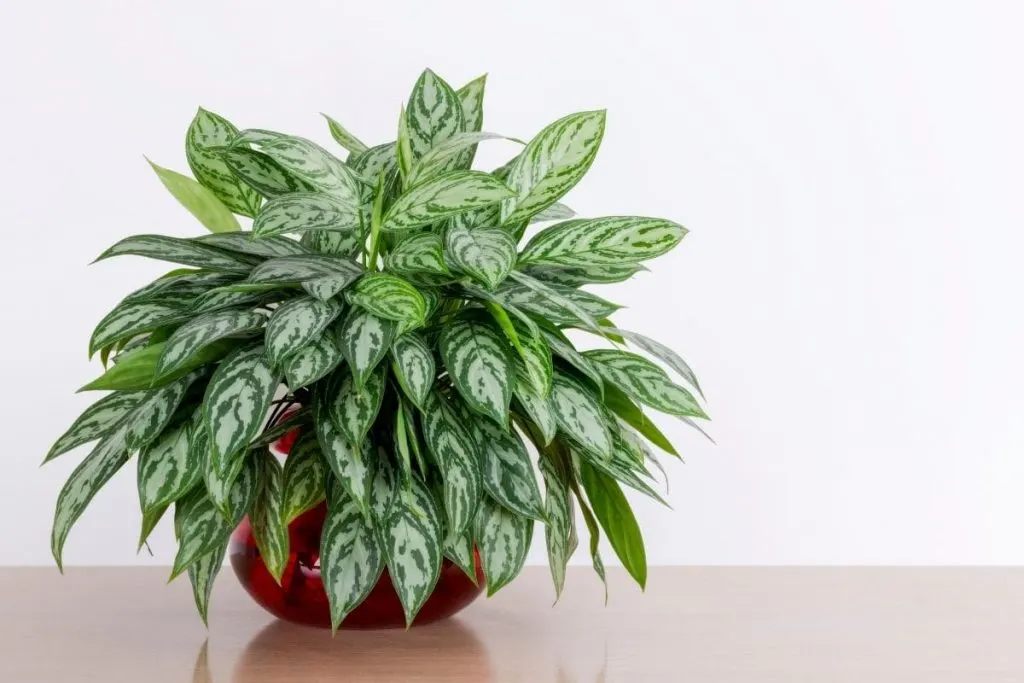
Native habitat: Asia
Scientific name: Aglaonema Maria
Light: indirect light or fluorescent light
Temperature: between 70 and 85 °F
Height: 15-17 inches
Humidity: high humidity
Soil: well-draining soil
Its green foliage can grow to 17 inches high. Maria has thick light green leaves and just like Siam Aurora, it is a rare aglaonema variety.
They prefer when they’re located in a partial shadow with indirect light. With that in mind, place them near the window, maybe in a bedroom.
This plant can grow under fluorescent light so don’t be afraid to get one.
Aglaonema White Rain
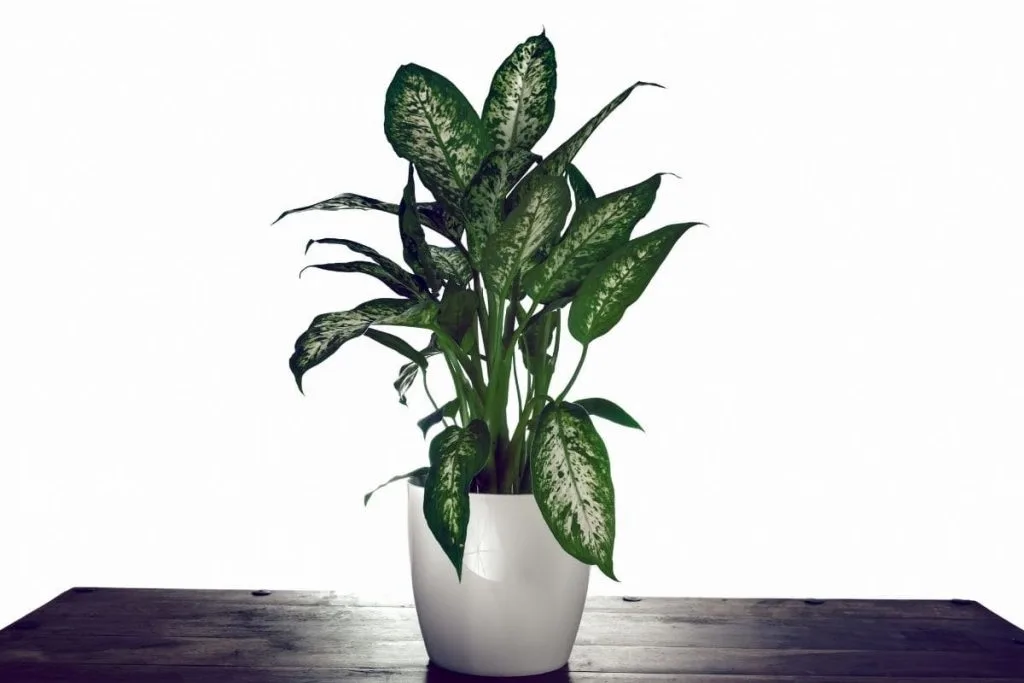
Native habitat: Asia New Guinea
Scientific name: Aglaonema alba pluvia
Light: indirect light
Temperature: 65-70 °F
Height: 8 inches to 4 feet
Humidity: high humidity
Soil: watering now and then
They are bred and hybridized and therefore come in a variety of shapes, sizes, and variegation.
Although many owners Aglaonema, this plant may look very different. This plant isn’t very needy, it doesn’t require feeding or often watering so if you do everything properly and simply let it be, you will have a nice stable house plant.
Aglaonema Chocolate Plant Treat
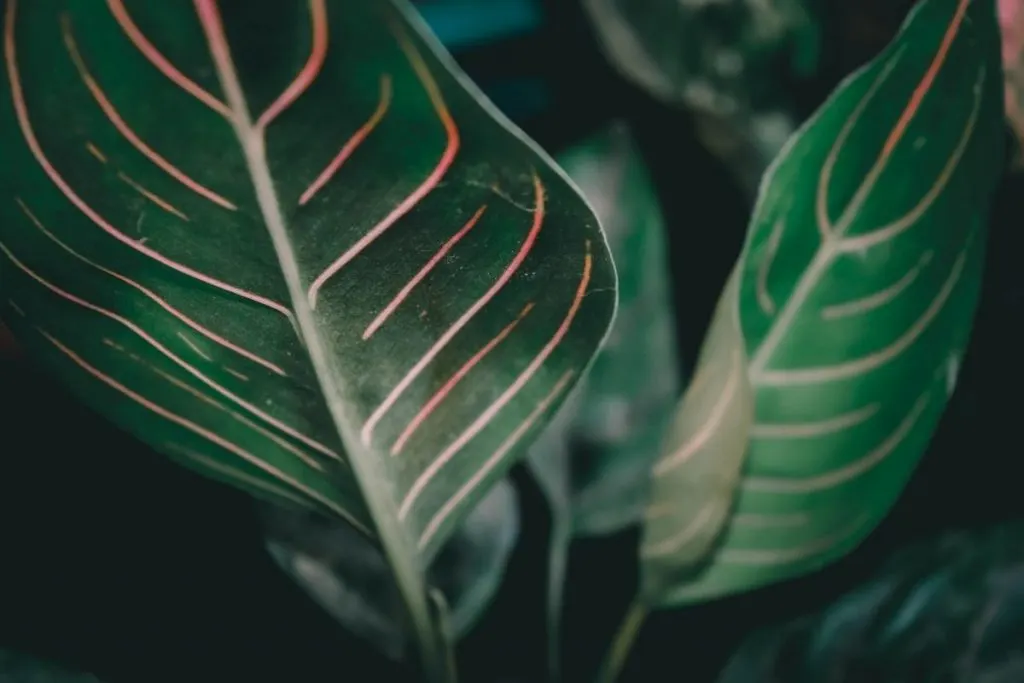
Native habitat: dense forest of Asia
Scientific name: Aglaonema scelerisque
Light: indirect light
Temperature: 65 – 70 °F
Height: 3 feet tall
Humidity: high humidity
Soil: well-draining
Aglaonema scelerisque with completely green leaves is perhaps one of the most common houseplants in our region.
Not only does it adorn many homes, but it often adorns the stairs of buildings, as well as hospitals and various business premises.
This is no coincidence, as it can live in a wide range of lighting, in addition to not being sensitive and difficult to maintain.
It is great that this plant reproduces very easily and successfully, and in this way, it “spreads” from house to house.
Pruning Aglaonema Varieties
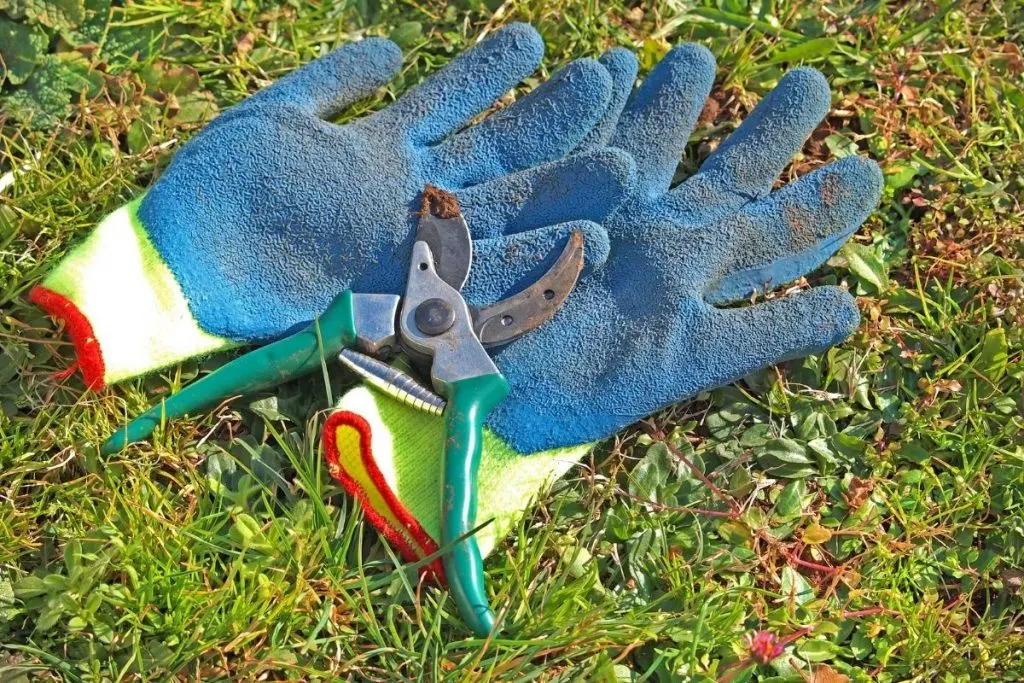
(applies to all aglaonema varieties)
You need to prune the aglaonema so that it does not stay growing. Pruning is done in the spring.
After you cut the old shapeless leaves, your plant grows, the flower grows much better, and the leaves become dense and durable.
In a growing plant, the stem must be gradually exposed. To make the aglaonema thick, you need to cut off the top.
Cut off a few inches of the upper leaves, trying not to damage the shape of the plant and its integrity.
Propagation From Cutting
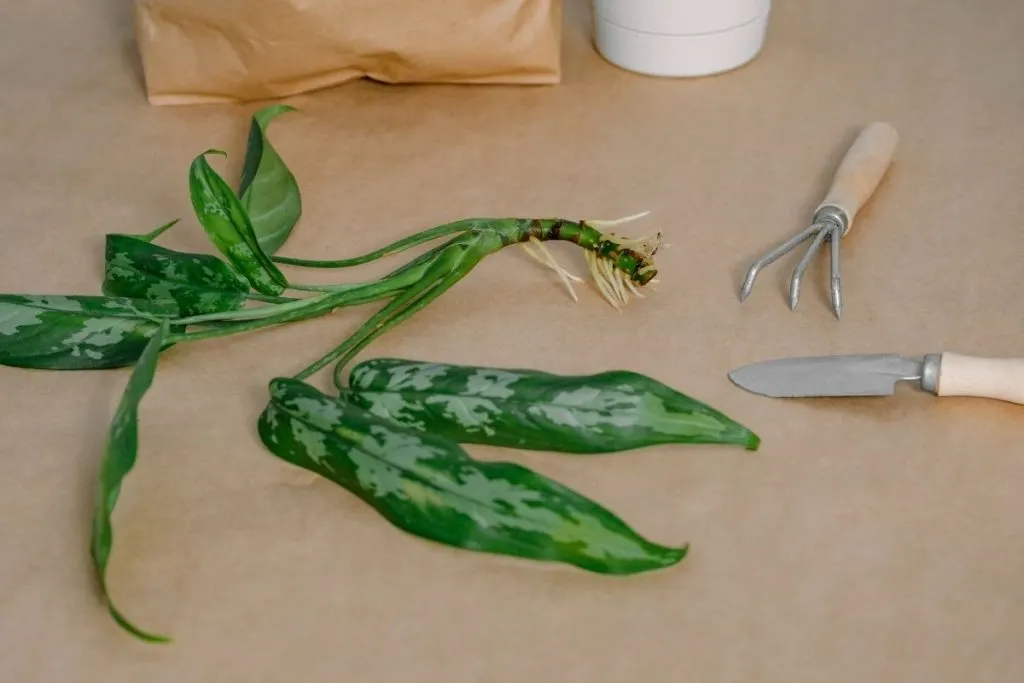
(propagation applies to all species since they all have the same stem and root structure).
Aglaonema can be propagated by cuttings only after the branching of its trunk begins or when the trunk is visible after the end of the rosette phase.
The stem must be cut off, as is done with top cutting. Then divide it into several parts, each of which should be 90-100 inches long, with leaf plates on each handle.
Leave the cuts in the open for 24 hours to dry and do not forget to treat the cuts with chopped charcoal.
Then the cut end of the cuttings must be buried 50 inches in a substrate consisting of sand and peat.
The container with the cuttings is removed to a warm place and if everything is done correctly, the roots should appear within 4 weeks.
If bottom heating is used during rooting, the cuttings will give roots after 20 days. In the absence of a mini greenhouse, cutting is recommended to be performed in spring or summer.
When parts of the stem grow at the root, plant them in separate pots filled with the substrate used for planting adult aglaonema.
Propagation From Aglaonema Varieties Seeds
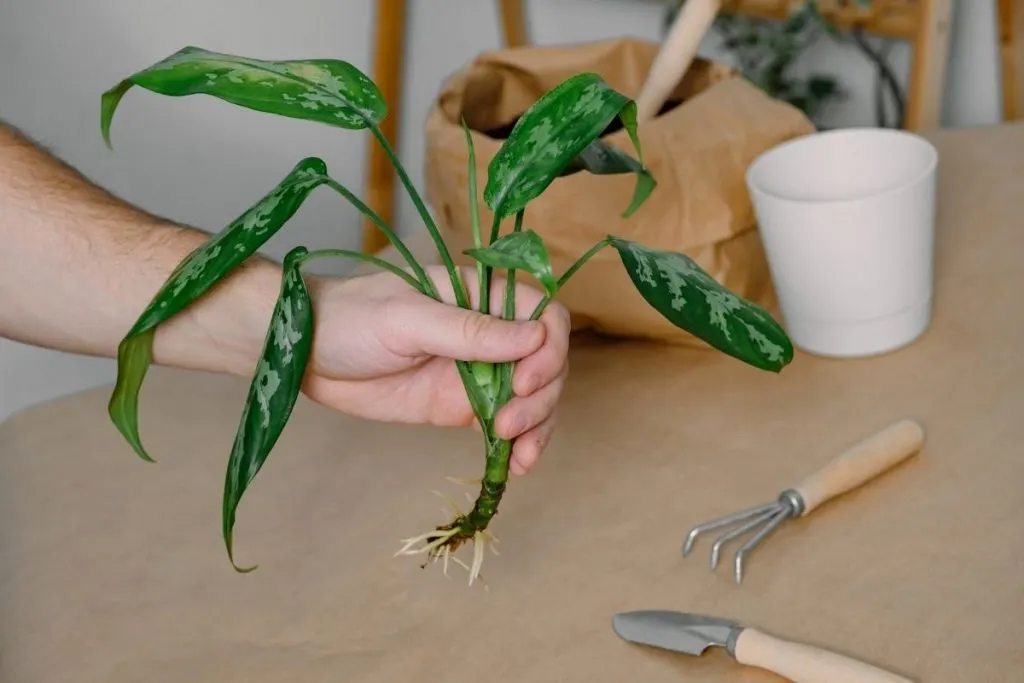
(propagation applies to all species since they all have the same stem and root structure).
If you take proper care of this plant, then it may bloom in summer. It should be noted that the veil flower is not of special decorative value.
It happens that such a plant self-pollinates, resulting in the formation of rubies or oranges. Wait until the fruits ripen directly on the bush, after which they can be used for sowing.
With this method of propagation, it is not always possible to preserve the varietal characteristics of aglaonema.
Don’t store the seeds, as they lose germination quickly. Remove crops to a warm place and water systematically. Seedlings will appear relatively quickly.
As soon as the first true leaf plates are formed, cut the plant into small separate pots. After the bushes grow, transplant them into larger pots. After 3 or 4 years you will already have developed shrubs.
Watering Aglaonema Varieties Plants
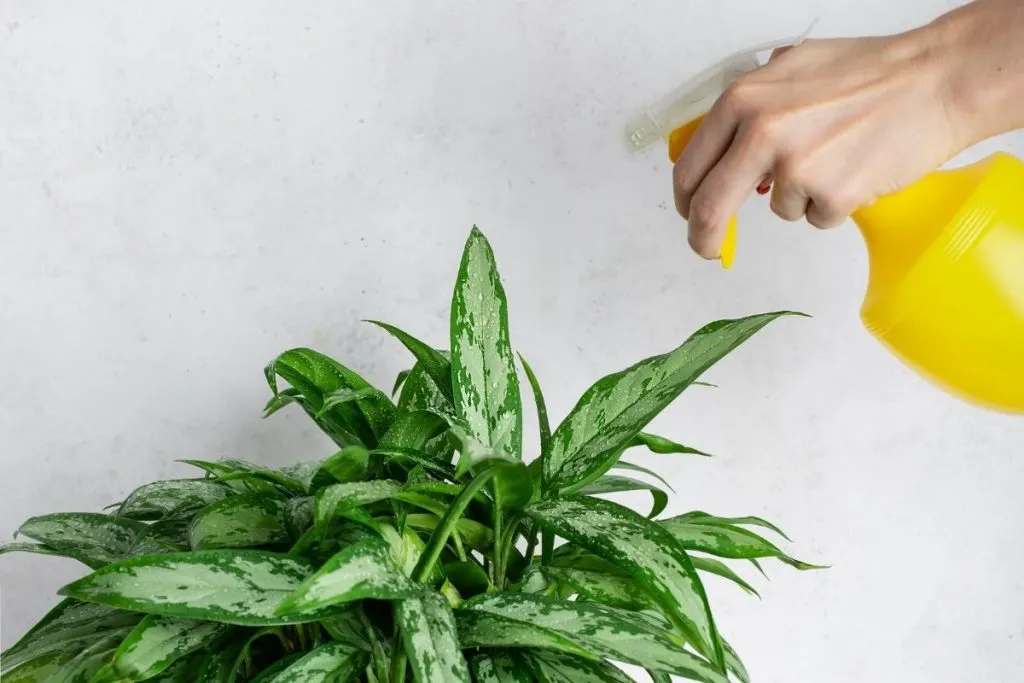
(applies to 85% of aglaonema varieties because they need the same water conditions)
Pour extremely soft water over the aglaonema. Abundant watering is done immediately after the top layer of the substrate dries. Water them especially in spring and summer, when the growing season.
In winter, water it after the top layer of substrate dries. It should be borne in mind that such a flower can be destroyed by drying the soil coma and stagnation of fluid in the substrate.
Humidity
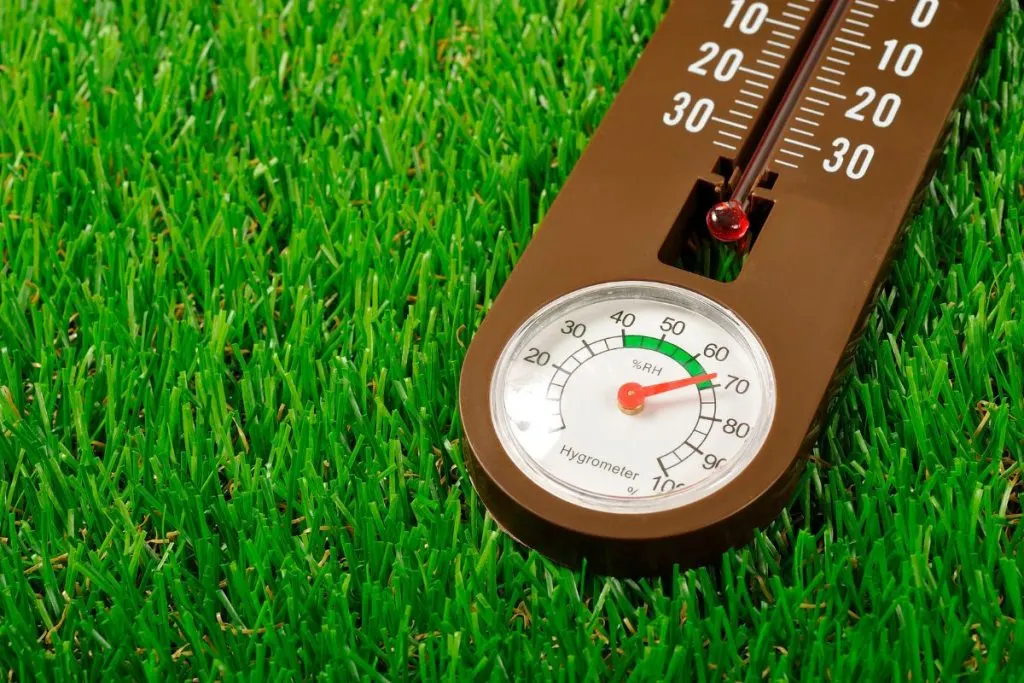
(humidity conditions apply to 90% aglaonema varieties)
This plant needs high humidity, which means that it must be systematically moistened from the sprayer.
If the humidity in the room where the aglaonema is located is excessively low, then the development of its leaf plates will slow down, and their deformation will occur, while the tops and edges of the plates will dry out.
To increase the humidity, pour gravel or expanded clay into the palette and pour a small amount of water into it, and place a flower pot on top.
Make sure that the liquid and the bottom of the container do not touch. In autumn and winter, if the room is cool, spray with great care.
Aglanome Varieties: Transplant
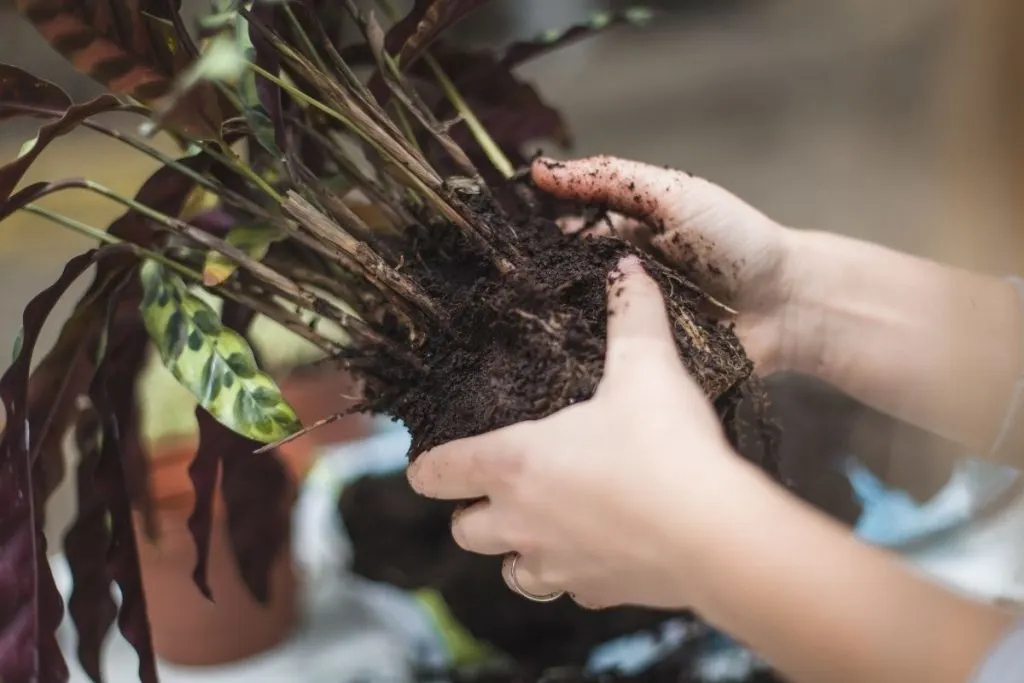
(transplant process applies to all aglaonema varieties)
Transplantation of young plants is carried out once a year in the spring. Adult shrubs should be transplanted in the spring, but much less often (once in 4 or 5 years).
The substrate for planting such a flower should consist of humus and leaf soil, sand, coal, and peat, which are taken in a ratio of 1: 6: 2: 2: 1.
You can take a soil mixture consisting of leaf soil, peat, and sand (2: 1: 1), and add a small amount of fine charcoal.
To prevent water stagnation in the soil, you must make a good drainage layer when planting at the bottom of the pot. This flower can be grown hydroponically.
Fertilizers
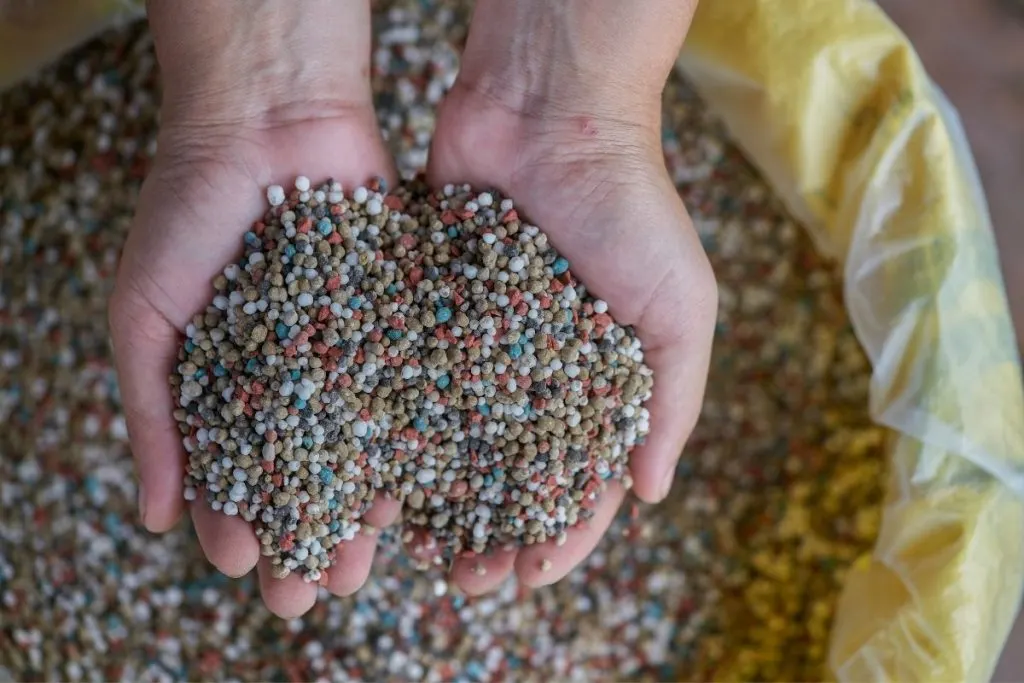
(applies for all aglaonema varieties)
In winter, aglaonema doesn’t need feeding. Feed it from the first spring to the last days of summer once every 2 weeks, while it is necessary to alternately use mineral fertilizers and organic matter.
Pay attention to the concentration of the nutrient solution which should be as indicated on the fertilizer packaging.
Aglaonema Varieties Diseases
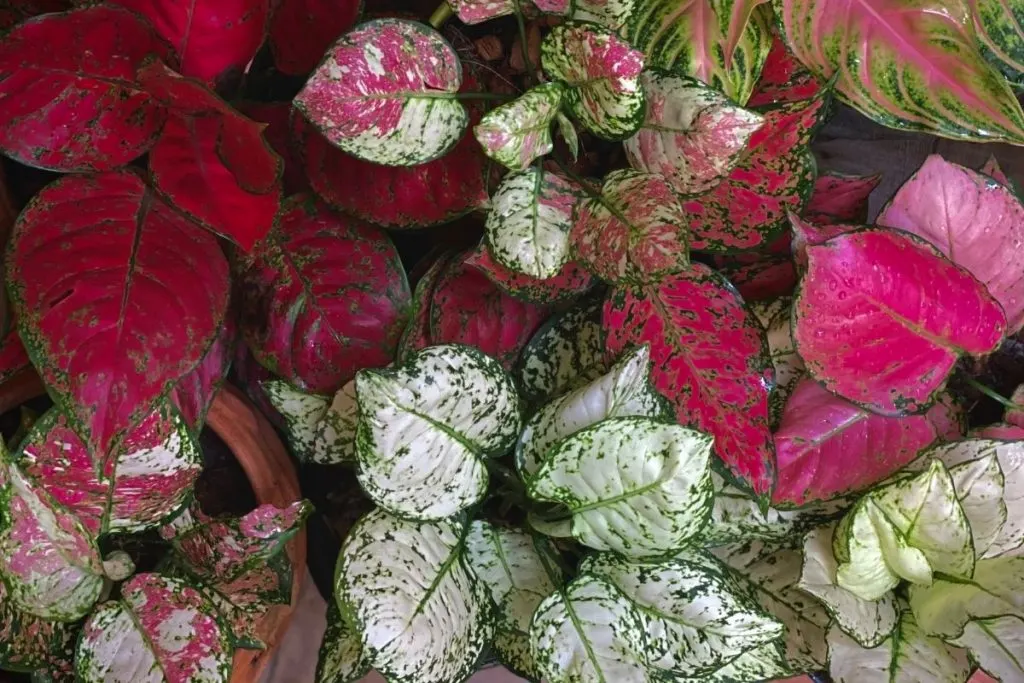
(applies for all aglaonema varieties)
As with any other plant, if you don’t take care of it properly, pests won’t destroy your plant, diseases will. Pay attention to the next couple of issues your plant might confront.
– Root Rot
When your plant starts to get yellowish leaves or simply stops growing, you need to know: that your plant has root rot.
To prevent this at the outset, pay attention to soil moisture before planting the plant in a pot.
Although sometimes too much water can be the cause, in fact too much water causes the underlying problem and that is a fungus.
– Leaf Spot
When you expose the plant to too much sun or when you do not give it as much water as it needs, your plant will start to get dry yellowish spots and it will look as if its leaves are starting to wither. Pay attention to lighting and watering and you won’t be facing these issues.
– Twisting Leaves
You will notice this problem when the temperature drops sharply or if you expose your flower to drafts.
In addition to curling at the tops, the leaves of your plant will turn brown. Although logical, to prevent further development of this problem, move your plant to a place where there is no draft and to a warmer place.
Aglaonema Varieties Pests
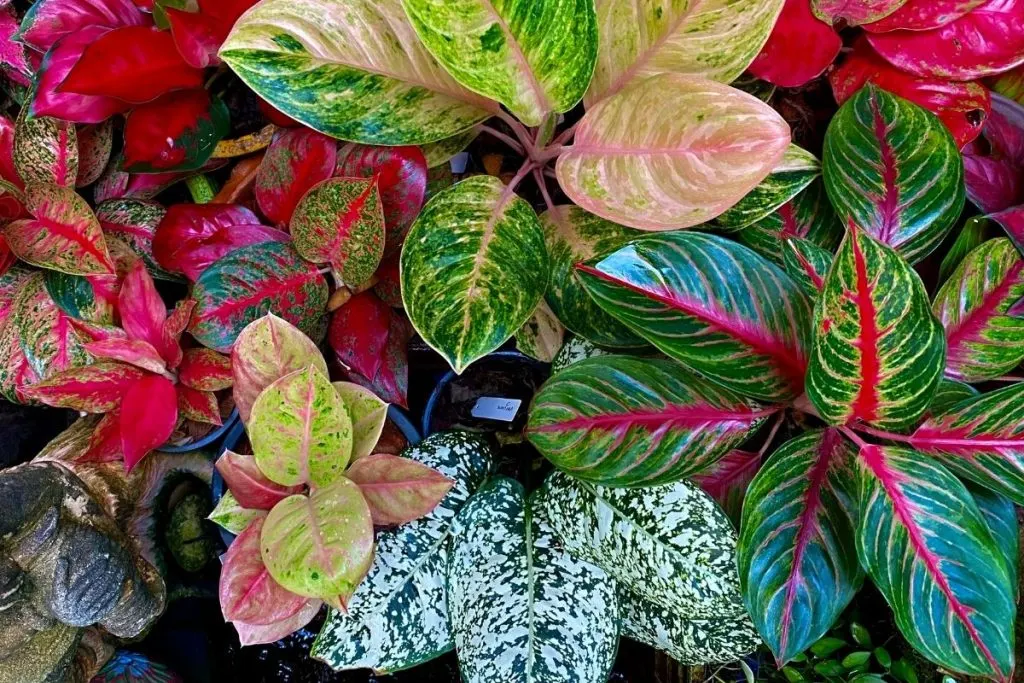
(applies to all aglaonema varieties)
Aglaonema, it doesn’t matter which one, is a target for aphids, powdery mildew, and spider mites.
Infection with these pests can be deadly to your plant. They form on the leaves of plants and feed on the juices of that plant.
The juices are of course nutritious and the first pests will stay on your plant until you use up all the nutritious juices from it. Flour beetles look like small balls of cotton and are easy to spot.
The worst pests are spider mites. They are almost invisible. Be patient and careful with all types of pests, but react as soon as you see them.
Aglaonema Varieties FAQ
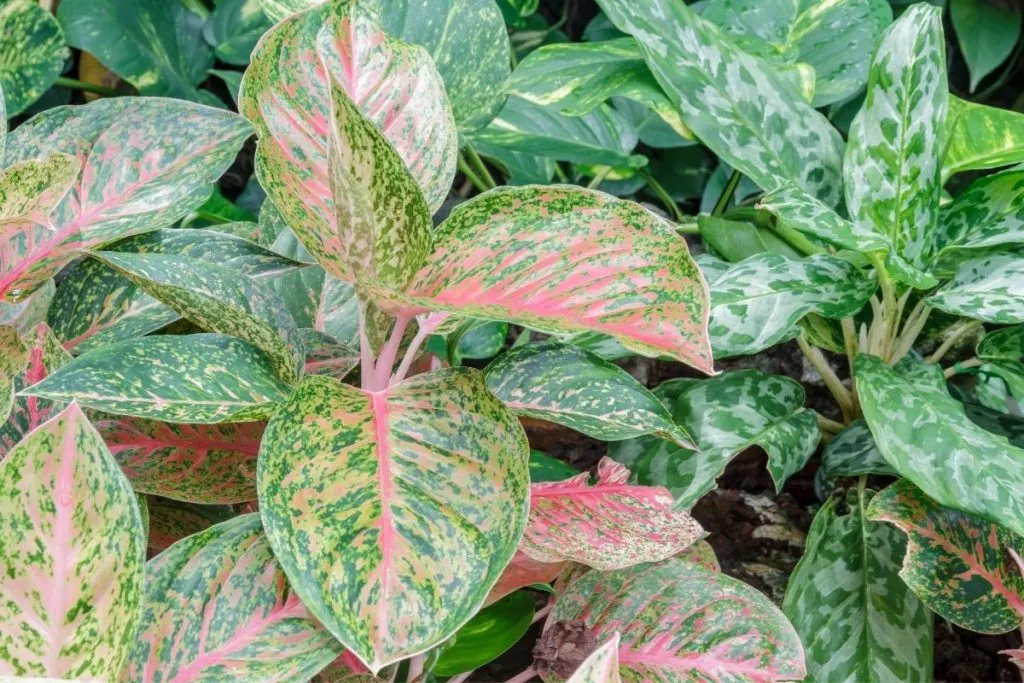
1. Aglaonema Varieties: Is Aglaonema A Lucky Plant?
Its longevity, ease of growth, and beautiful elegant appearance are beneficial to the health and financial success of people who grow it.
2. Aglaonema Varieties: Is Aglaonema Toxic?
If the juice of the bush itself or its fruits gets on your skin or mucous membranes, irritation may occur.
This irritation may be a little reddish, but if you do not react immediately, it can cause reddening of the skin in the form of a rash.
When the flower is done, wash your hands with soap and water. When it comes to pets, aglaonema will be toxic to your dog or cat. This plant contains calcium oxalate crystals and this is what causes toxicity.
3. Aglaonema Varieties: When Was Aglaonema Discovered?
Stunning aglaonema also called a queen does not seek royal treatment. It belongs to the Araceae family. She arrived in our region from the Philippines, Borneo, and Indonesia.
It was discovered back in 1847. Aglaonema is a relative of dieffenbachia and is somewhat similar to it, differing in narrower leaves and size. In addition, aglaonema blooms for quite a long time and forms fruits. It is one of the most suitable plants for hydroponic culture.
The classification and taxonomy of Aglaonema have undergone major changes in recent years. Experts have re-established the genus Aglaonema as a deck of maps, the latest data in the databases of famous botanical gardens date back to 2012, and many species, variations, and shapes are still debated.
Wrapping It Up About Aglaonema Varieties
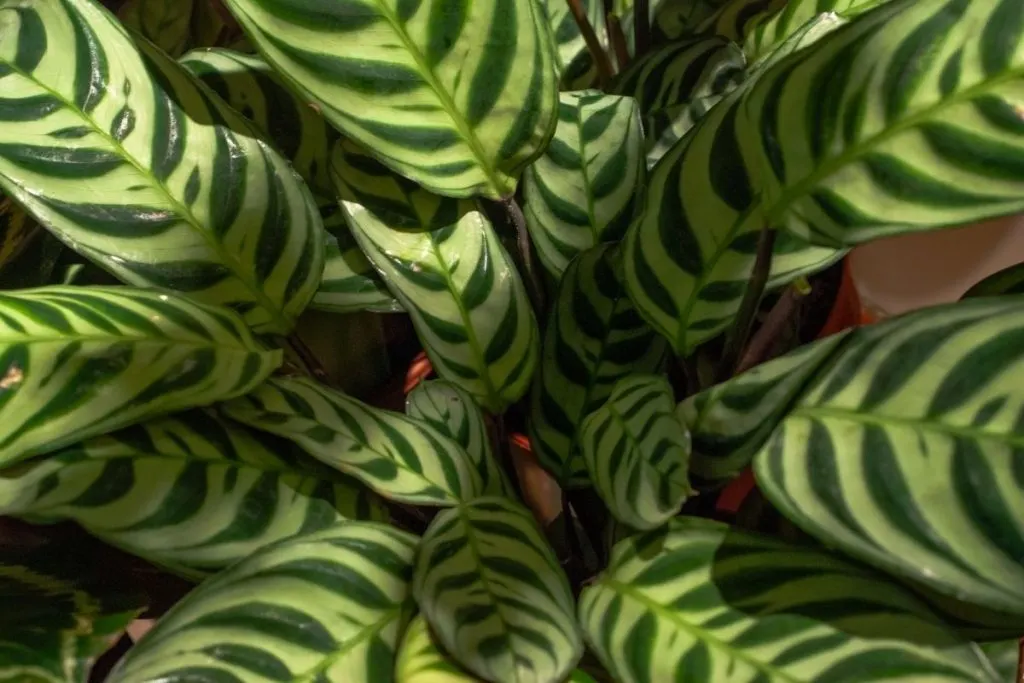
I know I know, you started reading and before you know it, it’s over. But I’m sure we were useful. I sincerely hope this article helped you with your knowledge of aglaonema varieties and everything else you need to know about them.
It might be challenging to get some of them, but they are like a treat in the shape of a plant. Once you get it, you will be happy and excited.
Good luck, until next time!
